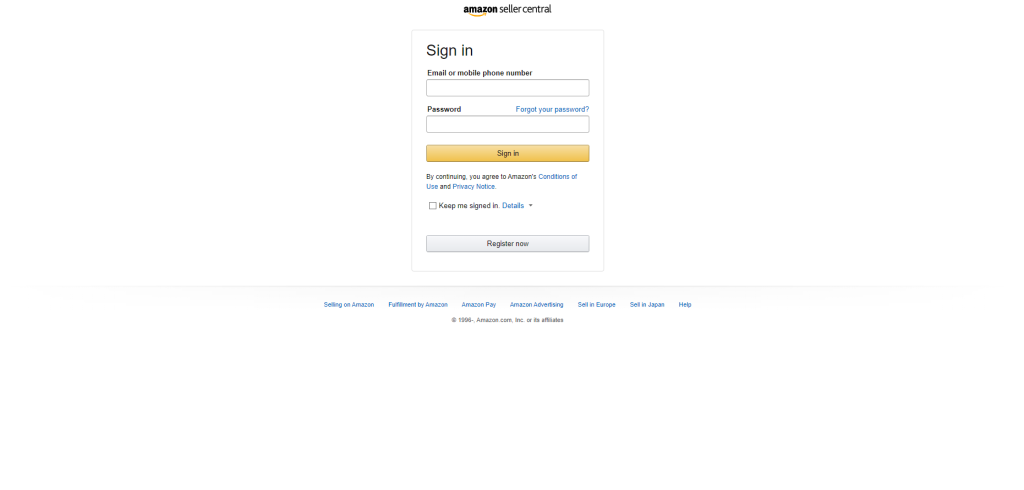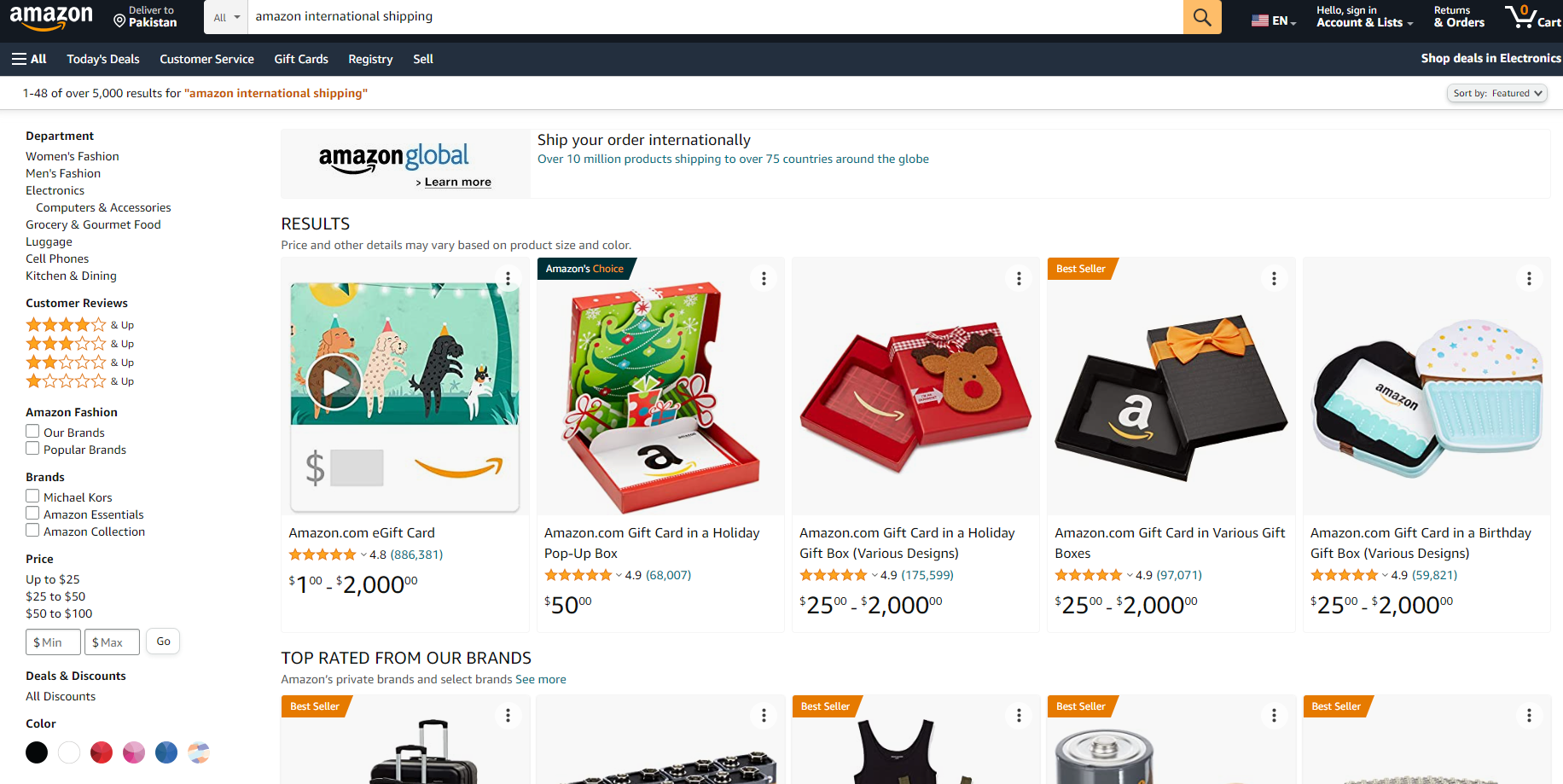Do you want to know how to make your Amazon business more successful? If you’re selling products online, you must be well-versed in the process of setting up shipping templates and settings. It’s essential for delivering customer satisfaction!
In this guide, we’re going to discuss how to configure shipping templates and settings for Amazon. We’ll look at the different types of shipping settings and templates, how to set them up, and why they’re important for a successful Amazon business. So that you don’t miss out on any critical details, let’s get started!
What Is An Amazon Shipping Template?

Before we dive into the details, let’s quickly go over what an Amazon shipping template is. Basically, an Amazon Shipping Template helps to organize and streamline the process of shipping products. It allows businesses to save time by featuring a central hub with all the necessary information, including SKUs and product weights, required for creating accurate shipping labels.
Because it efficiently tracks the details associated with shipments, an Amazon Shipping Template can be used to coordinate complex shipping operations with ease. By automating their shipping processes, companies can increase the speed at which they fulfill orders, leading to satisfied customers and improved efficiency.
Setting Up Shipping Templates And Settings

Now that you know what a shipping template is, let’s move on to setting up the templates and settings.
- Step one: Log into your Amazon Seller Central account and select the “Shipping Settings” tab in the left navigation bar.
- Step two: Select “Add a Shipping Template”. You can either choose to create a new template or import an existing one from another marketplace you sell on.
- Step three: Once you have chosen which option is best for you, fill out the fields provided on the template. This includes information such as product weights and SKUs, shipping service selections (e.g. Standard Shipping or Expedited), and item packaging options.
- Step four: Once your shipping template is complete, click “Save” to save it in your Seller Central account.
- Step five: Finally, you need to decide which shipping settings are relevant for your business. This will likely include things like Default Configuration options, handling fees (if applicable), and delivery estimates.
These five steps form the basis of setting up your Amazon shipping templates and settings. It’s important to take your time when making these decisions, as your new shipping templates can have a direct impact on the success of your business.
What Are The Different Types Of Shipping Settings On Amazon?

Now that you understand what an Amazon Shipping Template is, let’s talk about the different types of shipping settings. Here are some of the most popular ones:
1. Standard Shipping
This is the most common type of shipping setting, and it works well for most products. Standard shipping involves packaging the item securely and sending it to a reliable carrier such as UPS, USPS, or FedEx. When you create your standard shipping template in Amazon Seller Central, you can set up your own preferences for how much to charge the customer for this type of service.
Once you’ve determined the cost, you’ll also be able to select which carriers you want to use for standard shipping. This will ensure that your customers can get their items quickly and reliably. Additionally, when creating your standard shipping template, you can set up a lead time so that Amazon knows exactly how long it will take for an item to be shipped out. This will give customers a better idea of when they can expect their orders to arrive.
Finally, you’ll be able to set up any special requirements for your standard shipping template, such as requiring a signature or setting an expiration date for the order. All of this information will help you create an efficient and reliable standard shipping option for your Amazon store.
2. Expedited Shipping
If you have customers who need their items quickly, then expedited shipping is the way to go. With this type of setting, you’ll be able to set up a higher level of service for customers who have urgent orders. You can also specify that only certain carriers are suitable for expedited shipping, such as FedEx Express or UPS Express.
You’ll also want to make sure that customers recognize the shipping cost of faster shipping, so you may want to consider charging extra for expedited shipping. Setting up freight forwarders and consolidators is another great option here, as they can provide lower-cost shipping solutions that meet your customer’s needs.
Once you have set up expedited shipping, you’ll need to keep track of orders that are in transit. You may want to consider investing in a tracking software solution or using one provided by your carrier. This will enable you to provide customers with timely updates on their shipments and also alert them if there are any delays in order processing or delivery. You can also set up automated notifications to customers, so they are aware of their expedited orders every step of the way.
Don’t forget to provide customers with the necessary shipping documents and labels when they choose expedited shipping. This will ensure that these packages have all the right paperwork for delivery and won’t get held up at customs or in transit. Doing this will also help to reduce customer frustration and provide better shipping experiences overall.
3. International Shipping Settings
Just like with domestic settings, there are a variety of different ways that you can set up and configure your international shipping templates. One important factor to consider when configuring international shipping is whether or not you’ll be using Amazon’s global shipping program. This program is designed to streamline the international shipping process, and can significantly reduce the cost of international shipping for you and your customers.
If you choose to use the global shipping program, then all you need to do is set up a single template with standard shipping rates and policies in place. Otherwise, if you’d prefer to handle international shipping manually, then you’ll need to create a template specific to each individual country or region that you plan on shipping to.
You should also make sure that your international rates for different shipping regions are competitive and in line with the market rate so that customers won’t be turned off by excessive shipping costs. So change shipping template settings accordingly plus ensure that your customers are aware of any applicable customs fees or taxes for their particular order.
Finally, be sure to select appropriate shipping methods and carriers for your international shipments. Depending on the country, certain carriers may be more reliable and cost-effective than others, so it pays to do some research ahead of time. Once you’ve configured all of your settings, you can rest assured that your customers’ international orders will be shipped safely and quickly.
4. Premium Shipping Options
For customers who are willing to pay extra for premium shipping options, there are a few things you can do to give them the best experience possible. First, you need to decide on what type of special service you’ll offer and set up separate templates for each option. This will make it easier for customers to see the different levels of service you offer, such as express or priority shipping.
Once you have the templates set up, you should also create special labels and documents for premium shipping orders. This will help to expedite the processing of these orders and ensure that they are delivered quickly and safely. You can also consider offering discounts on these services to reward customers who choose them.
In addition to setting up special templates and labels, you should also consider offering other perks for premium shipping orders. These can include things like priority customer service or reward points that customers can use towards future purchases. Offering these kinds of extras can go a long way in providing customers with an exceptional shipping experience, and will help encourage them to use your premium shipping services in the future.
5. Freight Shipping
If you regularly deal with large or bulky items that require freight shipping, then configuring your templates and settings for these orders is a must. Depending on the size and weight of the item, you may need to set up a separate template just for freight shipping orders. This will help ensure that customers receive accurate price quotes and shipping times for their orders.
You’ll also want to make sure that your freight shipping templates include special handling instructions, such as “over-dimensional” or “oversized” items. This will help to ensure that the item is handled with care and correctly loaded on the transport vehicle. Additionally, you should take into account any special fees or taxes that you may need to pay for international freight shipping orders and make sure that they’re included in your template.
You should also consider offering additional services to customers who choose your freight shipping option. These can include things like door-to-door delivery or special packaging materials for fragile items. Offering these kinds of perks will help to give customers an exceptional shipping experience and encourage them to use your freight shipping service again in the future.
These five tips should help you configure or create shipping templates and settings for Amazon effectively. By following these steps, you can rest assured that your customers will be able to enjoy a safe and speedy delivery experience every time they place an order.
Why Configuring Your Shipping Templates And Settings For Amazon Matters?

After you have successfully set up your shipping templates and settings for Amazon, you may be wondering why it is so important. In this section, we will discuss the reasons why configuring these settings is so important.
1. Accurate Pricing
One of the most important reasons to configure your shipping settings for Amazon is to ensure accurate pricing. If you have not set up the correct templates, customers may be charged more or less than they should be. This can lead to unnecessary delays in delivery and damage your reputation as a reliable business. Additionally, having an accurate price quote will help to ensure that customers are not overcharged for their orders.
2. Faster Delivery
Another key reason to configure your new shipping template and settings for Amazon is to facilitate faster delivery times. If you have the correct labels and documents in place, then your orders can be processed much more quickly and efficiently. This will help to ensure that customers receive their orders at their default shipping address in a timely manner, without any unnecessary delays.
3. Customer Satisfaction
Mainly, configuring shipping templates and settings for Amazon will help to improve customer satisfaction. Customers appreciate businesses that offer accurate price quotes, speedy delivery times, and efficient customer service. Having the correct shipping settings in place can go a long way in helping you provide an exceptional shipping experience to your customers. Sometimes offer free shipping on orders above a certain amount, to give customers an added incentive to shop with you.
4. Encouraging Premium Shipping Services
Configuring shipping templates and settings for Amazon can help to encourage customers to use your premium shipping services. If you offer special perks such as door-to-door delivery or extra packaging materials, then customers are more likely to choose your service over a competitor’s. Offering these kinds of extras can help to set your business apart from the competition and encourage customers to use your premium shipping services in the future.
5. Enhancing Reputation
Finally, configuring shipping templates and settings for Amazon can help to enhance your business’s reputation. If customers know that they can rely on you to provide accurate price quotes and speedy delivery times, then they are more likely to trust your business. This will help to ensure that customers continue to come back to you in the future and recommend your business to their friends and family.
The Bottom Line
Configuring shipping templates and settings for Amazon is a critical step for any business that sells on the platform. By setting up the correct labels, documents, and additional services, you can ensure a smooth, cost-effective shipping process for your business. Start by determining which carriers and services will work best for you, followed by setting up the label formats, tracking information, and additional settings.
You can also take advantage of Amazon’s advanced tools to fine-tune your shipping performance. With strategic planning and attention to detail, you can ensure your shipping operations are running like clockwork.
Be sure to check out our other e-commerce guides.

